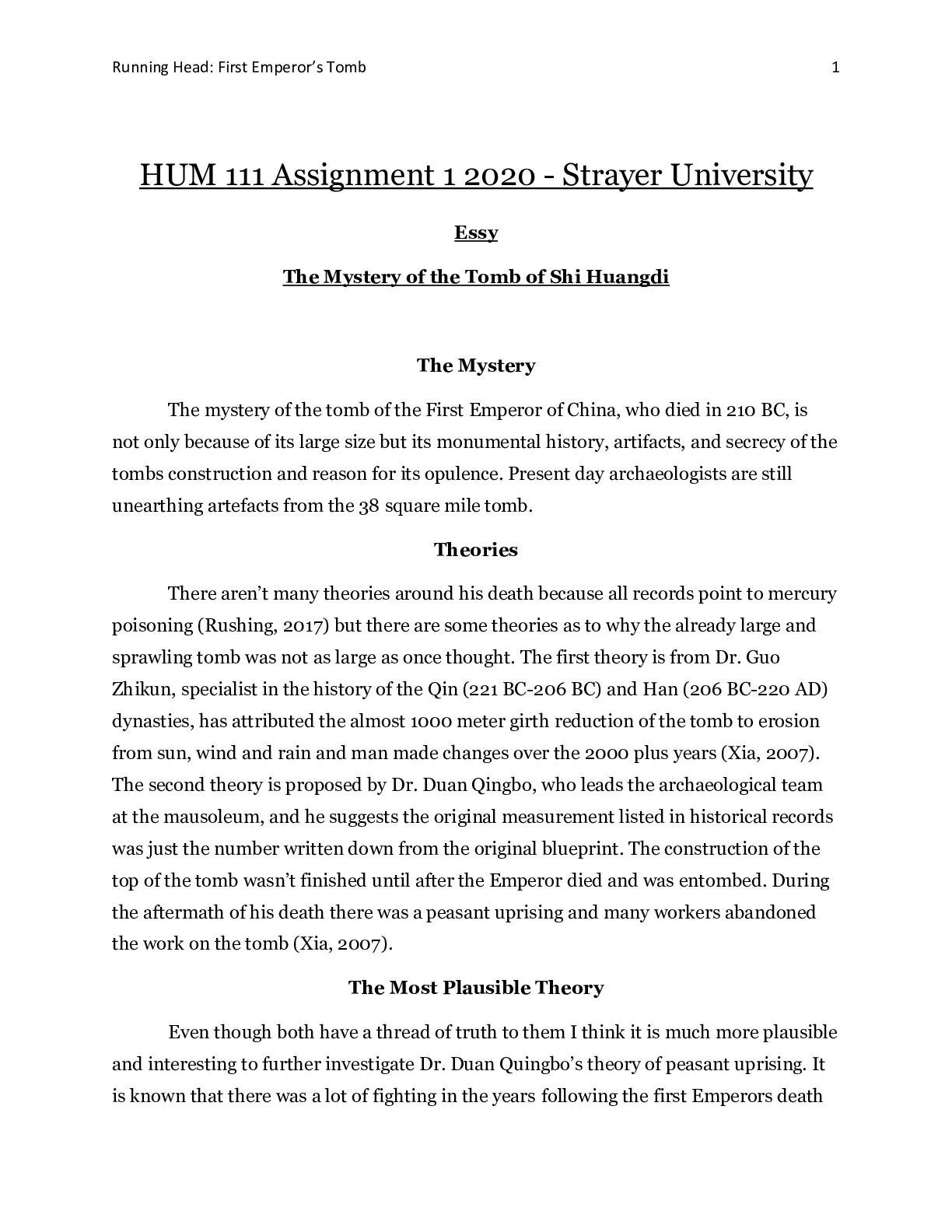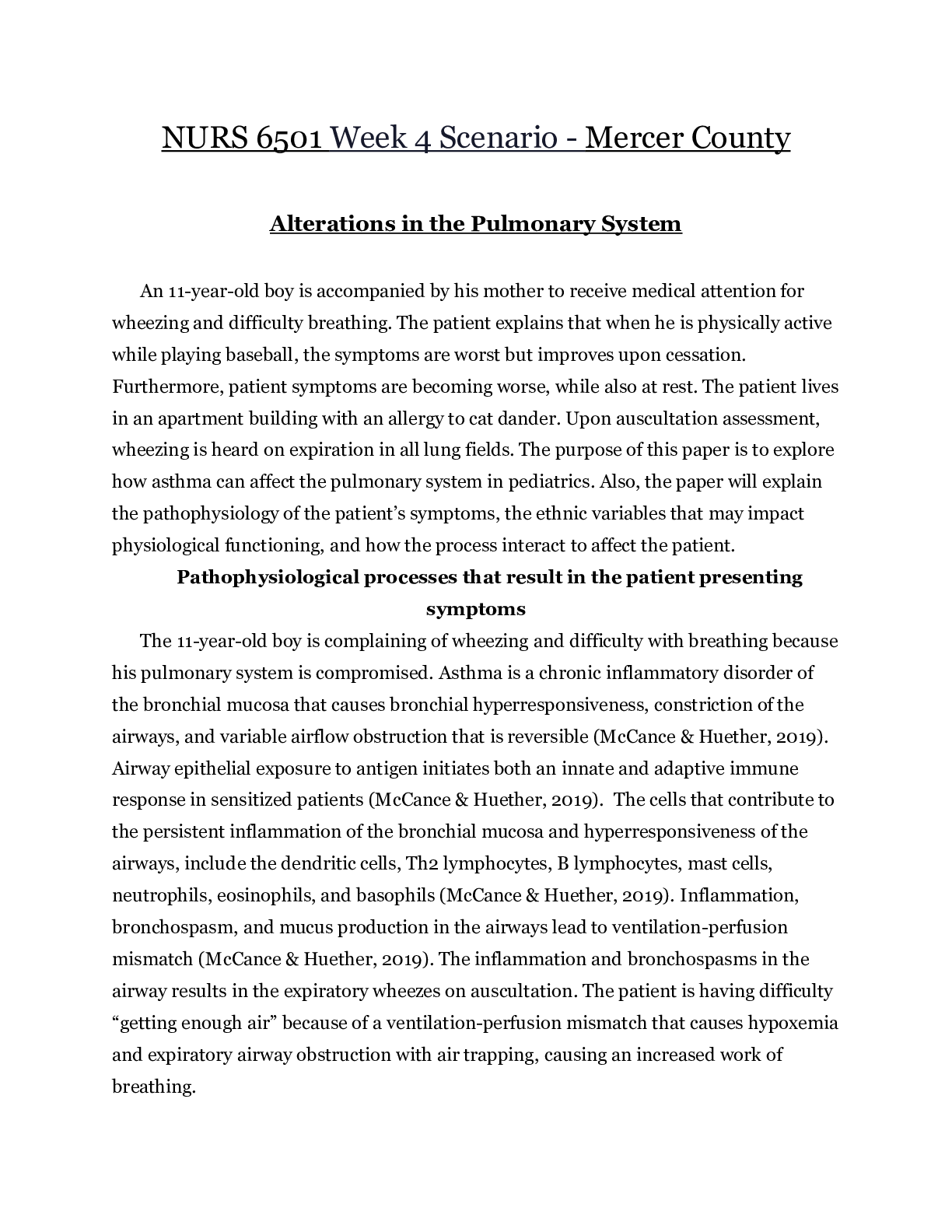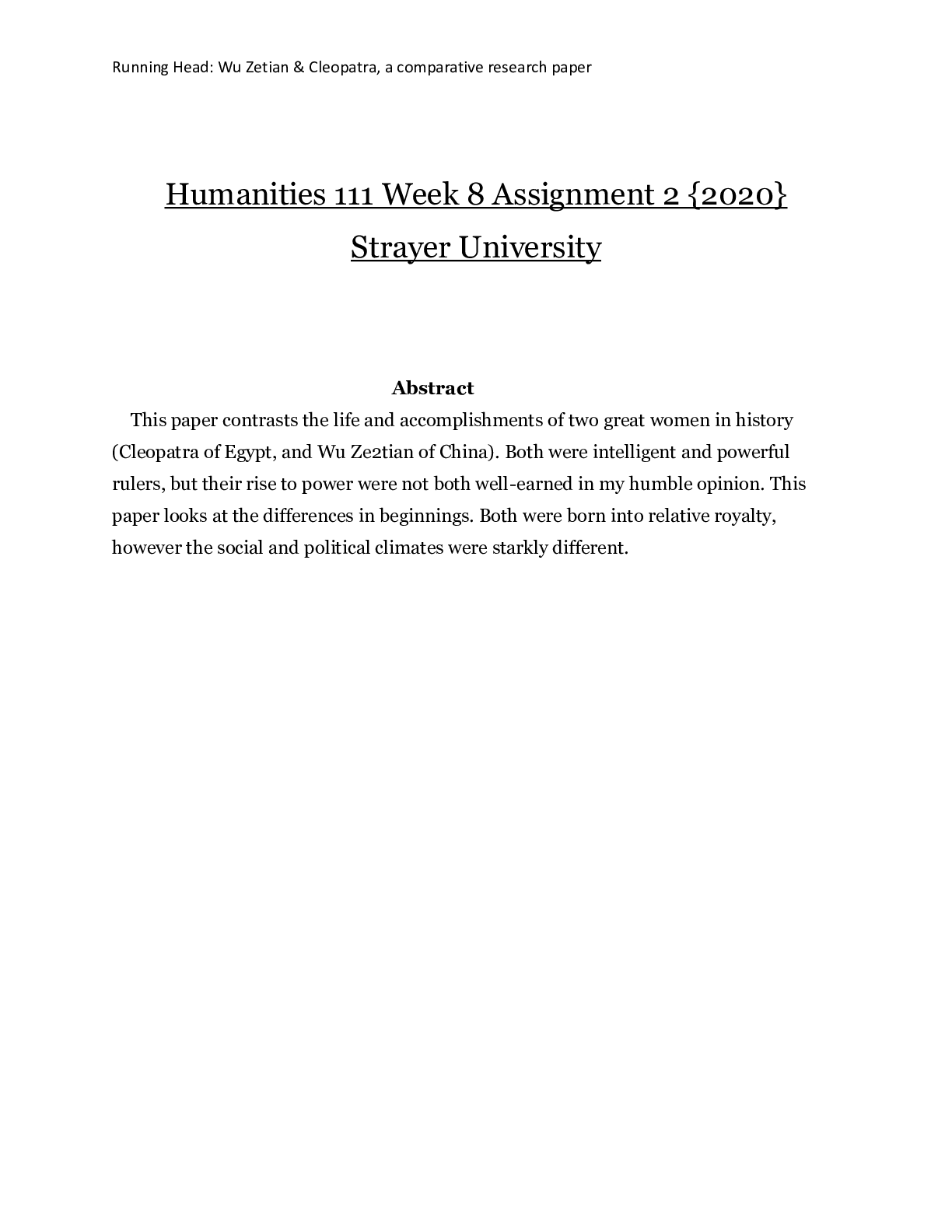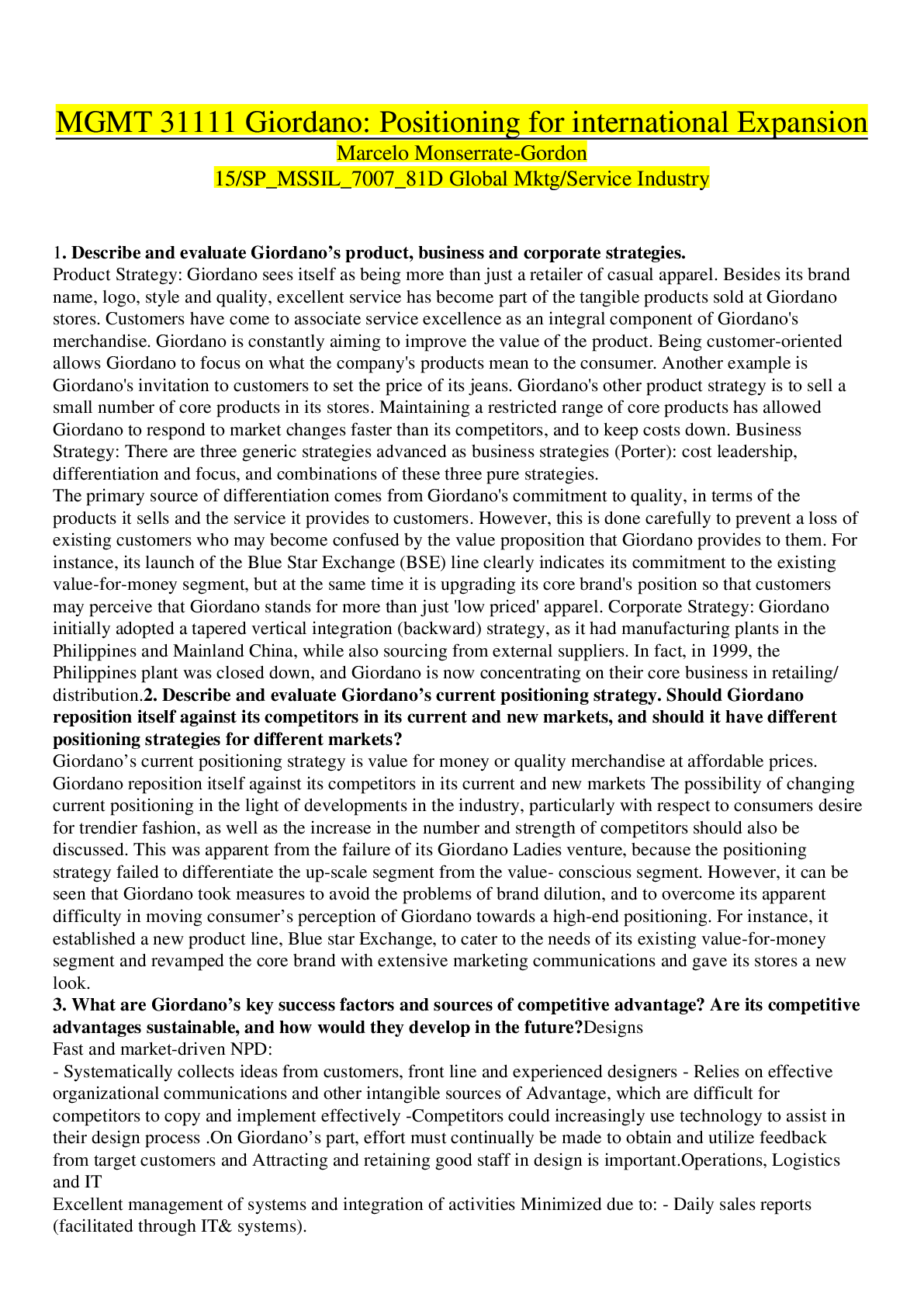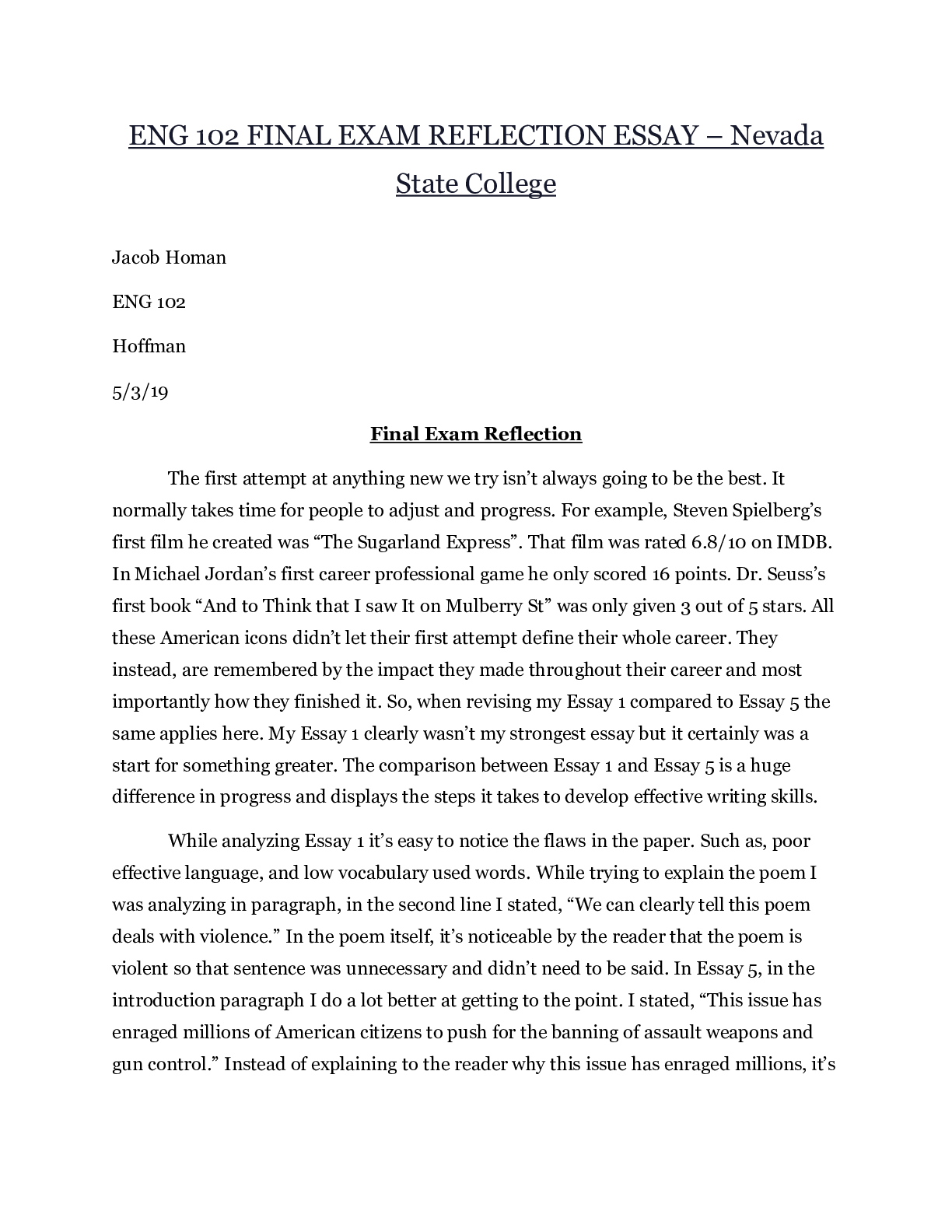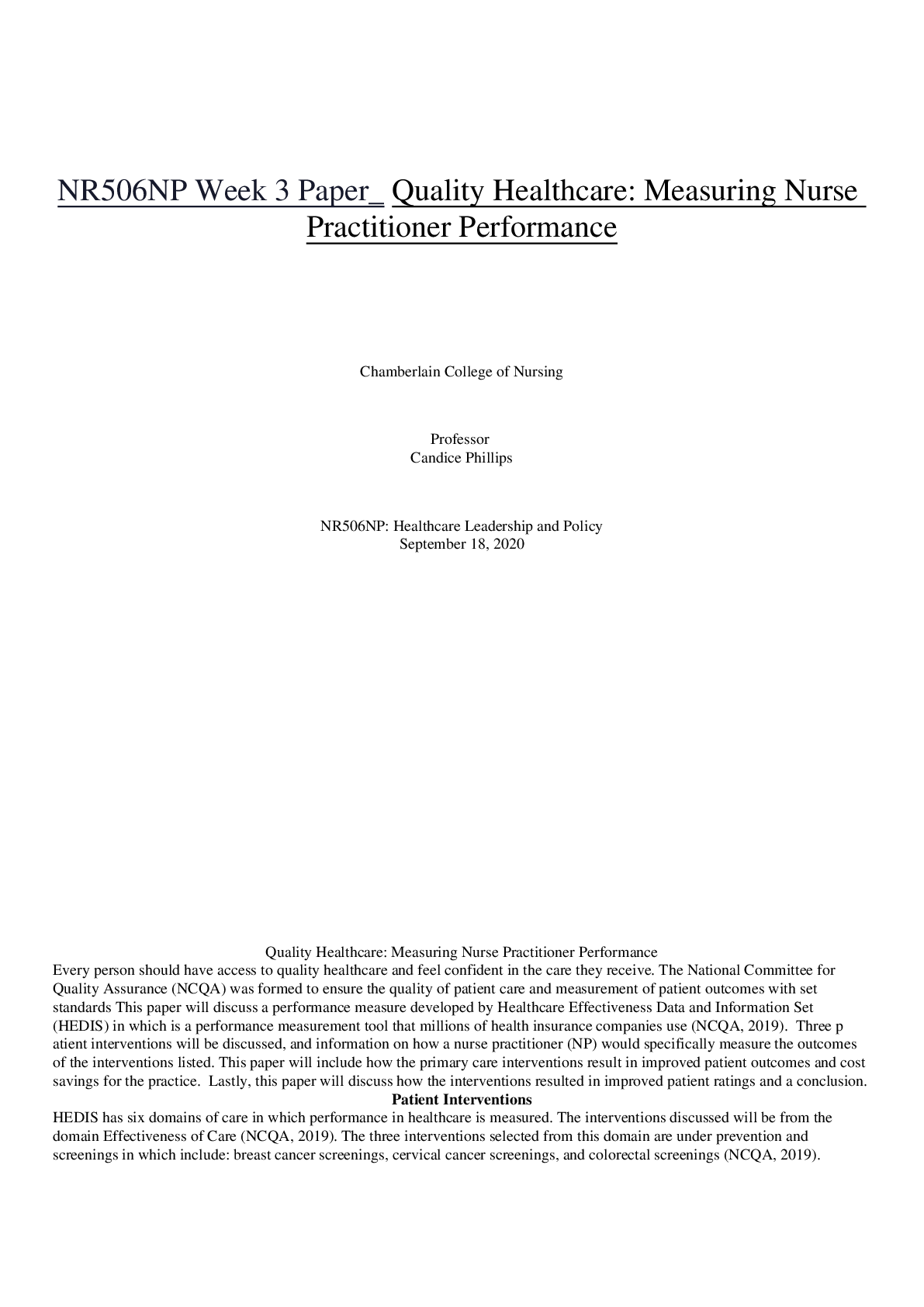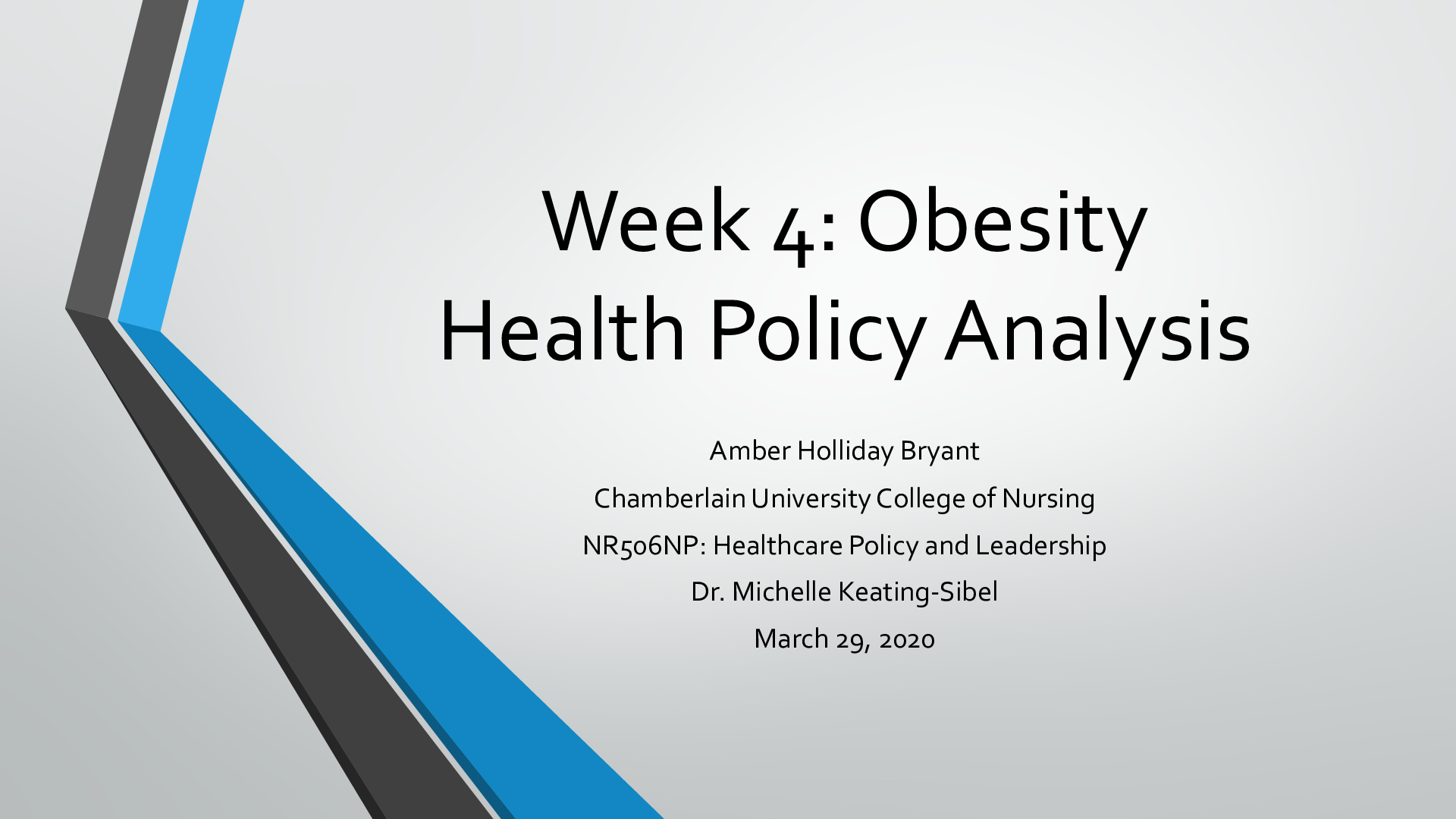*NURSING > ESSAY > NR 506 NP Week 3 Quality Healthcare: Controlling Hypertension 2020 | Healthcare Policy and Leadershi (All)
NR 506 NP Week 3 Quality Healthcare: Controlling Hypertension 2020 | Healthcare Policy and Leadership
Document Content and Description Below
NR 506 NP Week 3 Quality Healthcare: Controlling Hypertension Chamberlain University College of Nursing NR506NP: Healthcare Policy and Leadership Dr. Michelle Keating-Sibel March 22, 202... 0 Quality Healthcare: Controlling Hypertension Hypertension is known as the silent killer and often goes undetected. With the potential risk of causing kidney damage, myocardial infarction, congestive heart failure, or cerebrovascular accident, having an elevated blood pressure should not be taken lightly. Given the significance of managing adequate blood pressure levels, it is no surprise that the National Committee for Quality Assurance (NCQA) included controlling high blood pressure into the Healthcare Effectiveness Data and Information Set (HEDIS) under the effectiveness of care category (National Committee for Quality Assurance, 2020). By examining patient interventions for controlling high blood pressure and evaluating methods family nurse practitioners (FNP) can use to measure outcomes, one can begin to understand how these primary care interventions result in improved patient outcomes and cost savings for the practice, as well as result in improved patient ratings. Patient Interventions and Measuring Outcomes Patients play an important role in their health and must be conscientious of actions that can affect their overall wellbeing. Patient interventions are essential to improve the patient’s condition and are a necessary part of care. Hypertension affects one billion adults worldwide and 30% of adults in the United States (Liyanage-Don, Fung, Phillips, & Kronish, 2019). With such a staggering number of individuals affected by hypertension, patients must also do their part to improve their health. When a patient is working to control high blood pressure, patient interventions will be crucial to their success. Three patient interventions that would have a positive effect on controlling elevated blood pressure include home monitoring of the blood pressure and keeping a log, eating a heart-healthy diet, and increasing physical activity levels with exercise. - - - - - - - - - - - - - - - - - - - - - - - - - - - - - - - Hypertension is a problem for individuals throughout the world. With risks of kidney failure, myocardial infarction, cerebrovascular accident, and congestive heart failure, it has become evident as to why the NCQA has included controlling high blood pressure in the HEDIS. Interventions must be placed into patients’ daily lives to ensure that they can experience optimal outcomes. By examining three patient interventions for controlling high blood pressure, explaining how family nurse practitioners can measure the outcomes for the interventions, detailing how the patient interventions can save money in practice, and investigating how the overall outcome improves patient ratings, it becomes apparent that patient interventions to control hypertension are beneficial and essential to the health of our patients. With the help of FNPS and other providers, patients have the opportunity to positively influence their health and stop the silent killer in its tracks. References Deka, P., Pozehl, B., Williams, M. A., & Yates, B. (2017). Adherence to recommended exercise guidelines in patients with heart failure. Heart Failure Reviews, 22(1), 41–53. Kristanti, D., & Prihartono, N. (2019). Obesity as a predictor of hypertension in adult population: A 14-years retrospective cohort study. Indian Journal of Public Health Research & Development, 10(6), 491–497. Lindsay, R. W. (2017). Linking reimbursement to patient satisfaction: Is the tail wagging the dog? JAMA Facial Plastic Surgery, 19(3), 173–174. Liyanage-Don, N., Fung, D., Phillips, E., & Kronish, I. M. (2019). Implementing home blood pressure monitoring into clinical practice. Current Hypertension Reports, 21(2), 14. National Committee for Quality Assurance. (2020). HEDIS measures. Retrieved from http://www.ncqa.org/hedis/measures/ Verma, A., & Bhatia, S. (2016). A policy framework for health systems to promote triple aim innovations. HealthCarePapers, 15(3), 9-23. [Show More]
Last updated: 1 year ago
Preview 1 out of 7 pages
Instant download

Buy this document to get the full access instantly
Instant Download Access after purchase
Add to cartInstant download
Reviews( 0 )
Document information
Connected school, study & course
About the document
Uploaded On
Jan 25, 2021
Number of pages
7
Written in
Additional information
This document has been written for:
Uploaded
Jan 25, 2021
Downloads
0
Views
45

